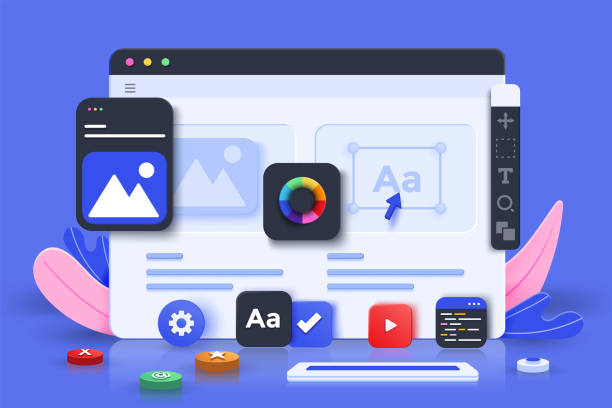Website development is the process of creating, designing, and maintaining a website that represents your business or organization online. It involves various aspects, such as content, layout, functionality, security, and performance. A well-developed website can help you achieve your online goals, such as increasing your visibility and reach, building your credibility and reputation, enhancing your customer service and satisfaction, generating more leads and sales etc.
However, website development is not a simple or easy task. It comes with many challenges and difficulties that require careful planning, execution, and evaluation. In this blog post, we will present a case study of a website development project in Dubai that faced some common and specific challenges and how they were solved. We will also share some lessons learned and best practices for website development in Dubai.

The Project Background
The project was to develop a website for a new e-commerce platform that sells organic and natural products in Dubai. The client was a startup company that wanted to launch its online store as soon as possible. The project scope included the following:
- Designing a logo and a brand identity for the e-commerce platform
- Creating a responsive and user-friendly website that works on different devices and browsers
- Developing an e-commerce functionality that allows users to browse, search, filter, compare, add to cart, checkout, pay, track orders etc.
- Integrating the website with various third-party services and platforms, such as payment gateways, delivery providers, social media etc.
- Optimizing the website for search engines and user experience
- Testing the website for functionality, performance, security etc.
- Launching the website and providing ongoing maintenance and support
The project team consisted of the following:
- A project manager who was responsible for planning, coordinating, monitoring, and controlling the project activities
- A web designer who was responsible for creating the logo, the brand identity, and the website layout
- A web developer who was responsible for coding the website functionality and integrating it with third-party services and platforms
- A web tester who was responsible for testing the website for functionality, performance, security etc.
The project duration was six months, with a budget of $50,000.
The Project Challenges
The project faced several challenges during its execution. Some of them were common to any website development project, while some of them were specific to the Dubai context. Here are some of the main challenges that the project team encountered:
- Lack of clear requirements: One of the biggest challenges that the project faced was the lack of clear and detailed requirements from the client. The client had a vague idea of what they wanted their website to look like and do but did not provide any specific or measurable requirements or specifications. This made it difficult for the project team to understand the client’s expectations and needs and to design and develop a website that met them.
- Changing requirements: Another challenge that the project faced was the frequent changes in the requirements from the client. The client often changed their mind about the features, functions, design elements etc. of their website during the project. This caused delays, rework, confusion, and frustration for the project team and increased the project cost and risk.
- Cultural differences: A third challenge that the project faced was the cultural differences between the project team and the client. The project team was based in India while the client was based in Dubai. There were differences in language, communication style, work ethic etc. between them. This sometimes led to misunderstandings, miscommunication, conflicts etc. during the project.
- Legal and regulatory issues: A fourth challenge that the project faced was the legal and regulatory issues related to website development in Dubai. The project team had to comply with various laws and regulations regarding e-commerce; data protection; consumer rights; taxation etc. in Dubai1. This required them to do extensive research; consult with experts; obtain licenses; permissions etc. before launching their website.
- Technical issues: A fifth challenge that the project faced was the technical issues related to website development in Dubai. The project team had to deal with various technical issues such as slow internet speed; limited bandwidth; firewall restrictions; compatibility issues etc. in Dubai2. This affected their productivity; quality; performance etc. during their website development.
The Project Solutions
The project team managed to overcome these challenges by applying various solutions during their website development process. Here are some of the main solutions that they implemented:
- Conducting workshops: To address the challenge of lack of clear requirements; changing requirements; cultural differences etc.; the project team conducted several workshops with the client at different stages of their website development process. These workshops helped them to clarify; define; validate; prioritize; document etc. their requirements; expectations; feedback etc. They also helped them to build rapport; trust; understanding etc. with the client and to resolve any issues or conflicts that arose during the project.
- Using agile methodology: To address the challenge of changing requirements; technical issues etc.; the project team used agile methodology for their website development process. Agile methodology is an iterative and incremental approach that allows for flexibility; adaptability; collaboration etc. during a project3. The project team divided their website development process into several sprints or cycles, each lasting for two weeks. At the end of each sprint, they delivered a working prototype of their website to the client for review and feedback. They then incorporated the feedback into their next sprint and repeated the process until they completed their website.
- Using cloud-based tools: To address the challenge of technical issues; legal and regulatory issues etc.; the project team used cloud-based tools for their website development process. Cloud-based tools are online tools that allow users to access; store; share; manage etc.